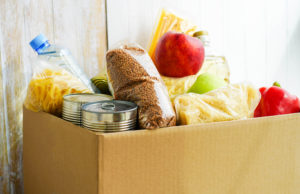On Feb 10, new lead standards go into effect concerning toys sold in the United States. Illinois Rep. Jan Schakowsky warns that stores may mark down toys with high lead levels to sell them before the deadline. She is also concerned that the government won’t enforce a ban on hormone-like chemicals called phthalates, as a staff attorney at the Consumer Product Safety Commission has said stores may continue selling toys with phthalates indefinitely, as long as the products were made before Feb. 10.
The idea that the toys may remain on shelfs is heightened by a study from the Michigan-based Ecology Center which found that nearly one-third of the popular toys tested contain medium to high levels of lead, cadmium, mercury, or other potentially dangerous chemicals. The study, which tested 1,500 children’s toys — straight from store shelves — for lead, arsenic, mercury, a flame retardant known as bromine and other substances, found one in three toys had significant levels of toxic chemicals. Lead, which can cause irreversible developmental and nervous system damage, was found in 20 percent of all the products tested. Other findings included:
Lead is Still in Toys – HealthyToys.org found lead in 20% of all the products tested this year, including 54 products (3.5%) that exceed the current 600 ppm recall threshold for lead-based paint, and the soon-to-be national standard for all children’s products. When children are exposed to lead, the developmental and nervous system consequences can be irreversible. The American Academy of Pediatrics has recommended a level of 40 parts per million (ppm) of lead as the maximum that should be allowed in children’s products.
It’s Not Just China – HealthyToys.org has not found a consistent correlation between the country of manufacture and the presence of toxic chemicals in toys. 21% of toys from China and 16% of those from all other countries had detectable levels of lead in 2008. 17 toys manufactured in the U.S. were sampled and 35% of those had detectable levels of lead. Two toys had levels above 600 ppm. Among the highest lead levels detected in HealthyToys.org (190,943 ppm) was in a Halloween Pumpkin Pin made in the USA.
- It’s Not Just Lead – HealthyToys.org found a significant number of toys containing cadmium, mercury, arsenic, and bromine. 2.9% (45 products) had bromine at concentrations of 1,000 ppm or higher. This indicates the likely use of brominated flame retardants — chemicals that may pose hazards to children’s health. Other toxic chemicals found in toys include arsenic, cadmium, and mercury. Arsenic was detected at levels greater than 100 ppm in 22 or 1.4% of products; 289 (18.9%) of products contained detectable levels of arsenic. Cadmium was found above 100ppm in 30 (1.9%) of products; 38 (2.4%) of products contained detectable levels of cadmium. Mercury was found above 100 ppm in 14 (1%) of products; 62 (4.2%) of products contained detectable levels of mercury.
Polyvinyl Chloride (PVC / Vinyl) – HealthyToys.org identified products made with PVC plastic by measuring their chlorine content. PVC is a problematic plastic because it creates major environmental health hazards in its manufacture and disposal and may contain additives, including phthalates, that may pose hazards. 27% of toys (excluding jewelry) tested this year by HealthyToys.org were made with PVC.
- Jewelry – Jewelry remains the most contaminated product category tested. Children’s jewelry is five-times more likely to contain lead above 600 ppm than other products. 15% of jewelry samples (compared to 3% of other products) had lead levels above 600 ppm. Overall, jewelry is twice as likely to contain detectable levels of lead as other products. Numerous Hannah Montana brand jewelry items tested high for lead. HealthyToys.org recommends that consumers avoid low cost children’s jewelry.
- The Good News – The good news is that 62% (954) of the products tested contain LOW levels of chemicals of concern, including 324 of these products which contained NO chemicals of concern. These products look and feel no different than other children’s products on the shelf. These findings show that manufacturers can and should make toys free of unnecessary toxic chemicals.
If you are wondering about a certain toy or want more information take the time to look at HealthyToys.org which contains features such as a personalized holiday wish list that can be sent to family and friends, and a blog-friendly widget to quickly search for toy ratings.

A founding partner with Bradshaw & Bryant, Mike Bryant has always fought to find justice for his clients—knowing that legal troubles, both personal injury and criminal, can be devastating for a family. Voted a Top 40 Personal Injury "Super Lawyer" multiple years, Mr. Bryant has also been voted one of the Top 100 Minnesota "Super Lawyers" four times.










Comments for this article are closed.